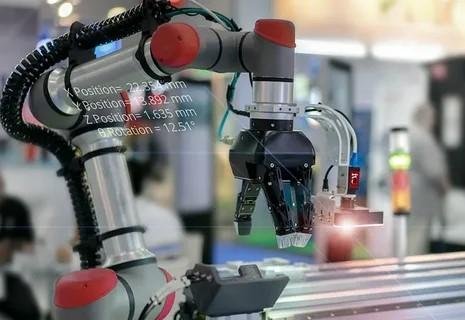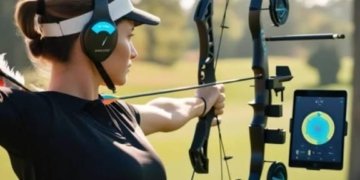The robotic vision market is entering an extraordinary phase of growth, fueled by rapid advancements in automation and artificial intelligence. According to the latest forecast, the industry is expected to be valued at USD 3.2 billion in 2025 and will nearly triple to USD 7.9 billion by 2035, registering a CAGR of 9.5% during the forecast period. This growth underscores the increasing reliance on intelligent vision systems to enhance manufacturing efficiency, ensure precision in quality control, and meet rising demands across diverse industries.
Get Ahead with Our Report: Request Your Sample Now!
https://www.futuremarketinsights.com/reports/sample/rep-gb-1913
Market Overview
Robotic vision has become an indispensable component of industrial automation. From automotive assembly lines to electronic manufacturing and pharmaceutical packaging, vision-guided robots are enabling real-time monitoring, defect detection, and decision-making at levels that were once considered impossible. The global push toward Industry 4.0 frameworks is accelerating adoption as manufacturers seek smarter, more reliable, and adaptable solutions for complex operations.
Technological breakthroughs in 3D vision, sensor miniaturization, and AI-driven machine learning algorithms have expanded the capabilities of robotic vision systems. This has enabled them to function effectively in demanding environments, delivering higher accuracy, faster processing, and better adaptability. The growing pressure on industries to reduce human error, improve safety, and comply with stringent regulatory standards is reinforcing their integration.
Segmental Insights
The market is segmented by components, applications, and regions. On the component front, hardware holds the dominant position, while applications such as inspection and testing continue to lead adoption.
Hardware Component Dominance
By 2025, the hardware segment is expected to account for 58.3% of total market revenue. The rising demand for high-resolution cameras, advanced image sensors, lighting systems, and frame grabbers has cemented hardware as the foundation of robotic vision. These elements provide the real-time spatial recognition and data processing capabilities essential for high-speed automation.
As manufacturing environments become increasingly complex, the need for durable and high-performance hardware grows stronger. Both established manufacturers and emerging innovators are investing in next-generation components that can deliver higher resolution, faster speeds, and enhanced processing power. This commitment to hardware excellence ensures the segment’s long-term dominance.
Inspection and Testing Leading Applications
Among applications, inspection and testing will represent nearly half of the market, contributing around 47.2% of revenues by 2025. The ability of robotic vision systems to perform non-contact inspections, detect defects, verify dimensions, and identify surface flaws has made them indispensable in industries where quality and precision are paramount.
In automotive, electronics, and pharmaceutical sectors, these systems have drastically reduced downtime and human error while improving yield rates. Regulatory pressures and rising consumer expectations for flawless products are further driving adoption. The inspection and testing segment thus remains the most widely embraced application, serving as a critical enabler of improved quality assurance.
Market Drivers and Restraints
One of the strongest drivers of the robotic vision market is the growing demand for intelligent homes and assisted living solutions for an ageing population. Robots equipped with vision systems are increasingly being developed to assist elderly people with daily tasks, reflecting a broader societal shift toward robotics in everyday life.
Additionally, industries such as food processing are facing tighter government regulations related to sanitation and safety, fueling the demand for vision-guided robots capable of precise and reliable operations. However, challenges persist, including high initial investment costs and the lack of global standards for robotic implementation. These barriers may slow adoption in smaller enterprises but are unlikely to outweigh the significant long-term benefits.
Exhaustive Market Report: A Complete Study
https://www.futuremarketinsights.com/checkout/1913
Regional Outlook
The robotic vision market shows diverse growth dynamics across regions.
North America’s Established Leadership
North America remains the largest market, led by the United States. The region’s advanced manufacturing base, strong emphasis on food safety, and early adoption of robotic technologies have positioned it as a leader. Established companies continue to expand capabilities here, while new entrants are leveraging a favorable ecosystem for robotics startups.
Asia-Pacific’s Rapid Expansion
Asia-Pacific is the fastest-growing region, driven by surging demand in manufacturing and automotive industries. China, Japan, and South Korea are at the forefront, investing heavily in robotic integration to boost production efficiency. The region’s strong commitment to smart manufacturing and government support for automation are creating fertile ground for both established multinationals and rising local innovators.
Europe’s Industrial Strength
Europe’s market strength is rooted in its automotive, metal, and food & beverage sectors, with Germany emerging as the largest consumer of robotic vision systems. European manufacturers are increasingly turning to these systems to stay competitive in a high-cost labor environment. The region’s emphasis on sustainability and precision engineering is further fueling adoption.
Competitive Landscape
The robotic vision market features a mix of global giants and innovative newcomers. Established players such as Omron Adept Technologies, ABB Ltd, Cognex Corporation, and Keyence Corporation continue to invest in advanced hardware and software solutions that cater to large-scale industrial applications. Their deep expertise, global presence, and strong R&D capabilities allow them to set benchmarks for reliability and precision.
Meanwhile, newer entrants like IVISYS and emerging software innovators are making waves by developing agile, AI-driven systems designed for flexible manufacturing environments. These companies are not only expanding their presence in key markets but also forming collaborations and partnerships to accelerate technology deployment. This balance between established leadership and new ingenuity is shaping the industry into a dynamic ecosystem that thrives on both stability and disruption.
Future Outlook
Looking ahead, the robotic vision market is poised for steady expansion, with opportunities spanning multiple industries. As vision technology becomes more affordable and standardized, even small and medium-sized enterprises will increasingly adopt it. The continued convergence of robotics, artificial intelligence, and imaging technologies promises solutions that are faster, more precise, and more adaptable than ever before.
Manufacturers, whether well-established leaders or agile newcomers, are aligning their strategies to harness these opportunities. With investments in next-generation hardware, software innovation, and region-specific solutions, they are not only expanding their businesses but also redefining the role of robotics in modern industry.
Future Market Insights Inc.
Christiana Corporate, 200 Continental Drive,
Suite 401, Newark, Delaware – 19713, USA
T: +1-845-579-5705
For Sales Enquiries: sales@futuremarketinsights.com
Website: https://www.futuremarketinsights.com
Future Market Insights, Inc. (ESOMAR certified, recipient of the Stevie Award, and a member of the Greater New York Chamber of Commerce) offers profound insights into the driving factors that are boosting demand in the market. FMI stands as the leading global provider of market intelligence, advisory services, consulting, and events for the Packaging, Food and Beverage, Consumer Technology, Healthcare, Industrial, and Chemicals markets. With a vast team of 400 analysts worldwide, FMI provides global, regional, and local expertise on diverse domains and industry trends across more than 110 countries.
This release was published on openPR.

















